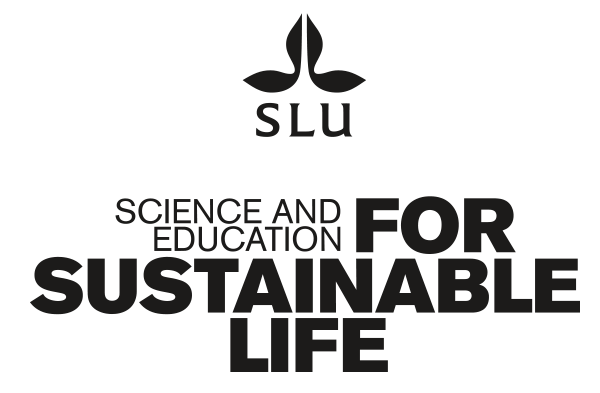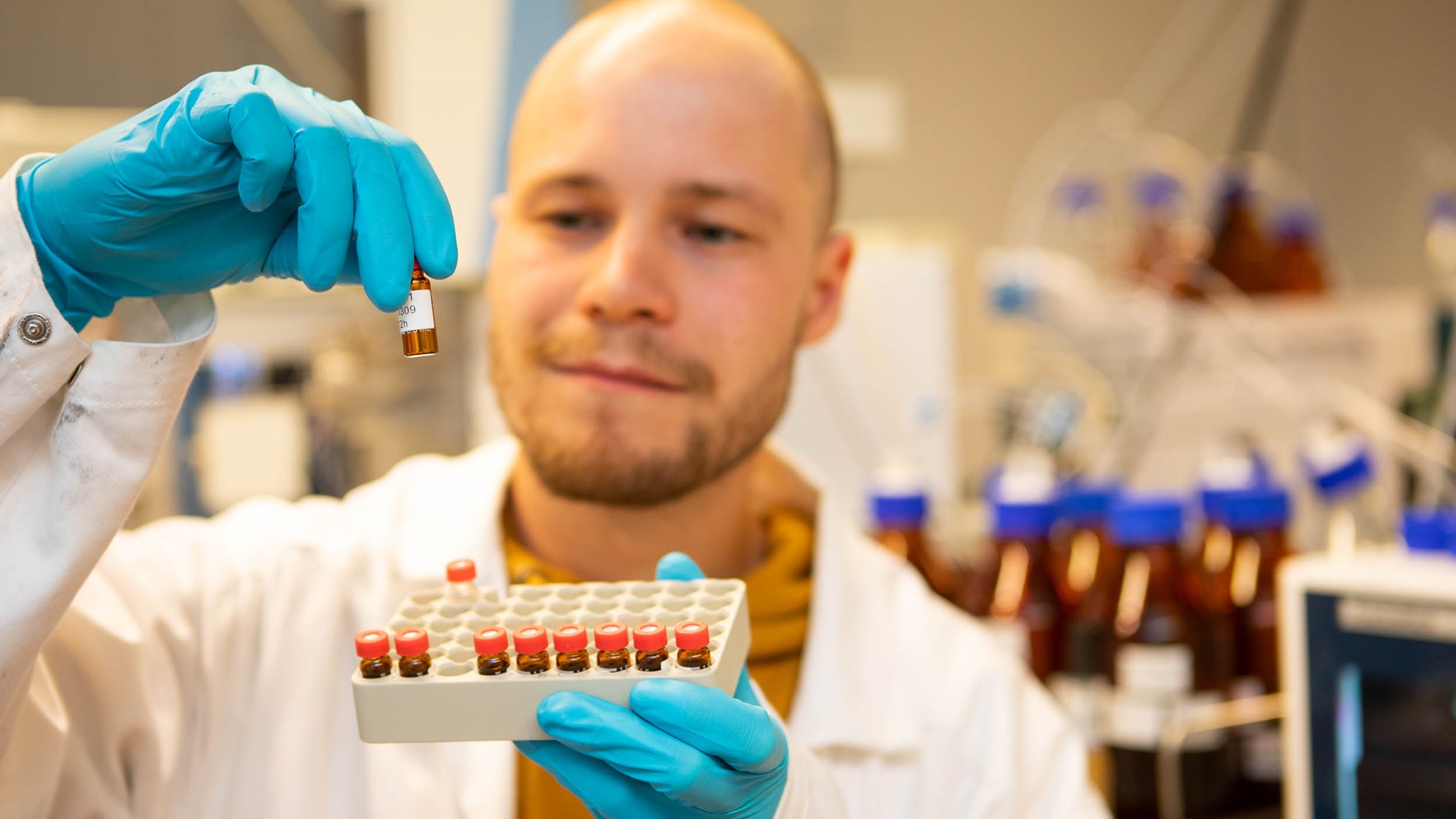
Svante Rehnstam checks the samples before they are loaded into the sample rack of the chromatography system for analysis.
Photo: Jenny Svennås-Gillner
I stood at the railway station. Everything was brand-new. I was new in town, new at my job, new as a professor at SLU and a new member of the Toxicological Council. Which is why I was waiting for my colleague Agneta, who knew how to get us to the Swedish Chemicals Agency and which people we were to meet there.
![]()
The problems with PFAS in drinking water reservoirs had just been discovered. Since PFAS are persistent chemicals that – at least in some cases – are toxic, it was a natural topic of discussion during the bumpy train rides.
This was the first of many trips with Agneta. Agneta Oskarsson is a toxicologist and I, Karin Wiberg, am a chemist, so we came to talk about the drinking water problem from our different perspectives. They were exciting conversations that triggered our creativity. We realised that a combination of our different perspectives could provide an ideal approach to secure high-quality drinking water.
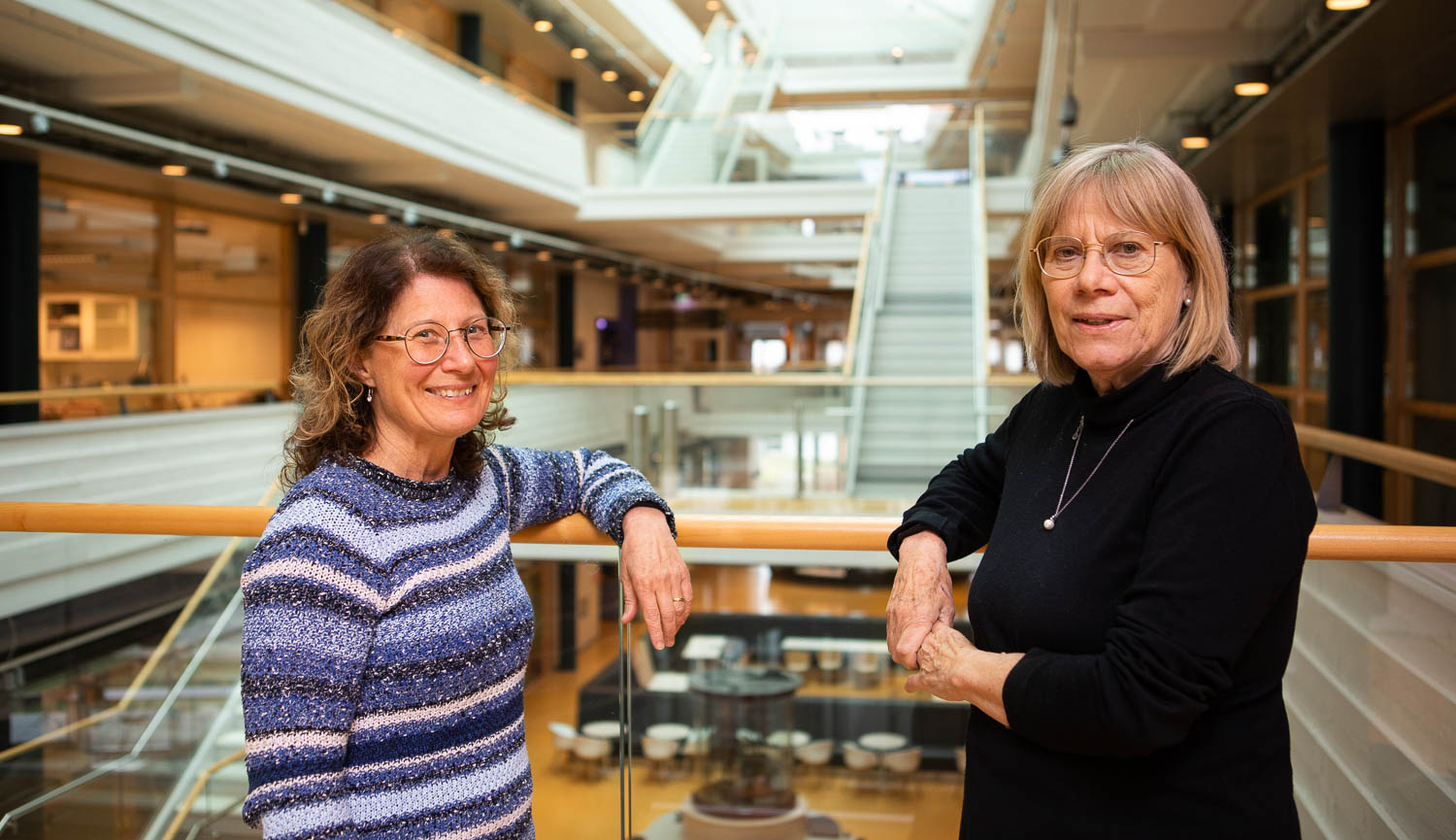
Karin Wiberg and Agneta Oskarsson combine their expertise to develop an integrated analysis method for safe drinking water. Photo: Jenny Svennås-Gillner
A few years have passed since we decided to join forces towards an integrated analysis approach that could contribute to an improved method of water analysis. Since then, we have successively developed this integrated method, which helps us to characterise water samples and detect any potential chemical risks.
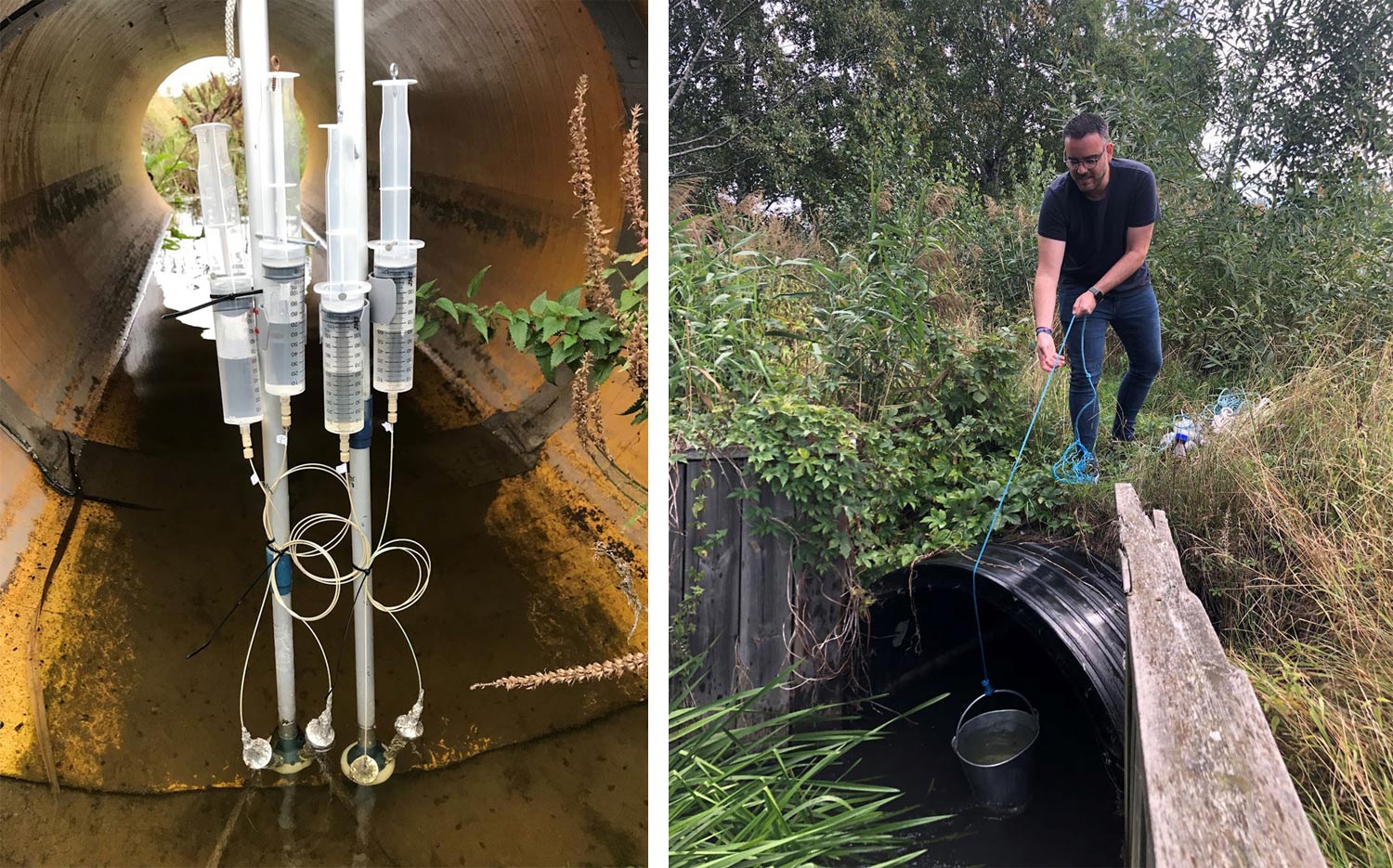 The sampling device on the left is invented by Karin’s colleague Ove Jonsson. With this, so called TIMFIE sampler, time averaged concentrations of organic environmental micropollutants, including pesticides and PFAS can be determined. The picture is from the Mälaren catchment area, near the area where Stockholm gets its drinking water. On the right, field sampling in a storm water pond in Upplands-Bro (Tibbledammen) which flows into Lake Mälaren. Foto: Ove Jonsson and Karin Wiberg
The sampling device on the left is invented by Karin’s colleague Ove Jonsson. With this, so called TIMFIE sampler, time averaged concentrations of organic environmental micropollutants, including pesticides and PFAS can be determined. The picture is from the Mälaren catchment area, near the area where Stockholm gets its drinking water. On the right, field sampling in a storm water pond in Upplands-Bro (Tibbledammen) which flows into Lake Mälaren. Foto: Ove Jonsson and Karin Wiberg![]()
When we analyse a sample, we need different amounts of water depending on whether it is clean or dirty. If it is a drinking water sample, for example, we need quite a large volume to detect any unwanted substances that may be hazardous to humans and the environment. If, however, it is a sample taken downstream of a sewage treatment plant, the sample volume can be significantly smaller.
When processing a water sample, the first step is to concentrate it up to about 5,000 times and pass it through a filter to remove particles. In this step we also remove the ‘water’ and replace it with methanol. This may sound strange, but to ensure the best possible performance of our analyses, we need our target compounds solved in a so-called organic solvent. After this step, we have a couple of options. Either we divide up the samples, giving half to the toxicologists to do cell-based analyses while we, the chemists, conduct mass spectrometry analyses on the other half. Or we integrate the analyses.
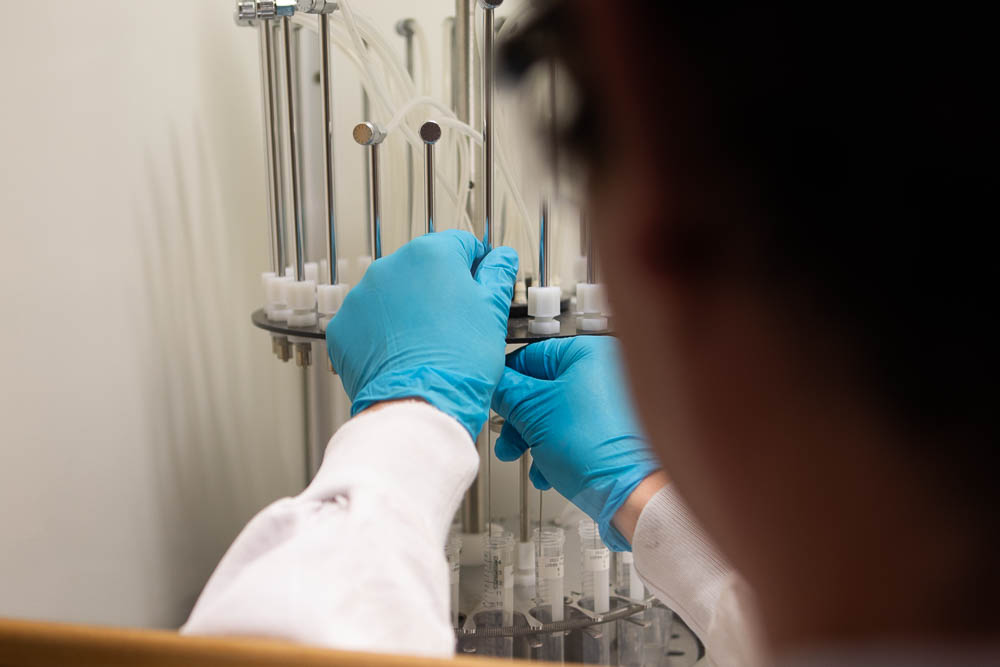 The water samples are concentrated up to 5000 times before they are analysed. Photo: Jenny Svennås-Gillner
The water samples are concentrated up to 5000 times before they are analysed. Photo: Jenny Svennås-Gillner
![]()
The integrated analysis begins in a noisy room containing an entire machine park. We inject the sample into a chromatograph that divides it up. Part of it goes into a mass spectrometer, which generates a huge amount of data on its chemical structure. The other part of the sample is divided into small ‘packets’ on a white tray with many tiny round-bottomed wells. You could say that the substances are sorted by their physico-chemical properties. The white tray and its contents are for toxicologists and their tests.
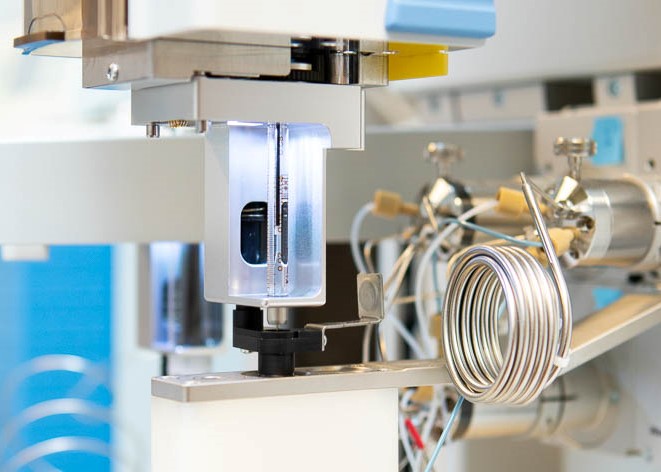 The chromatography system separates the substances that are present in the water sample. Photo: Jenny Svennås-Gillner
The chromatography system separates the substances that are present in the water sample. Photo: Jenny Svennås-Gillner
We chemists must now deal with the enormous quantity of data produced by the mass spectrometer. In the next room, a sort of control room, it is much quieter and easier to focus and read the data about what substances are in the wells. Although the toxicologists have the trays, we can relate the detected compounds to certain packets due to their retention times in the chromatograph. Do we recognise any of the substances? Can we match them to chemical structures that are already in the database? This takes time. It also takes in-depth knowledge for the analyst.

Svante Rehnstam checks the samples before they are loaded into the sample rack of the chromatography system for analysis.
Photo: Jenny Svennås-Gillner
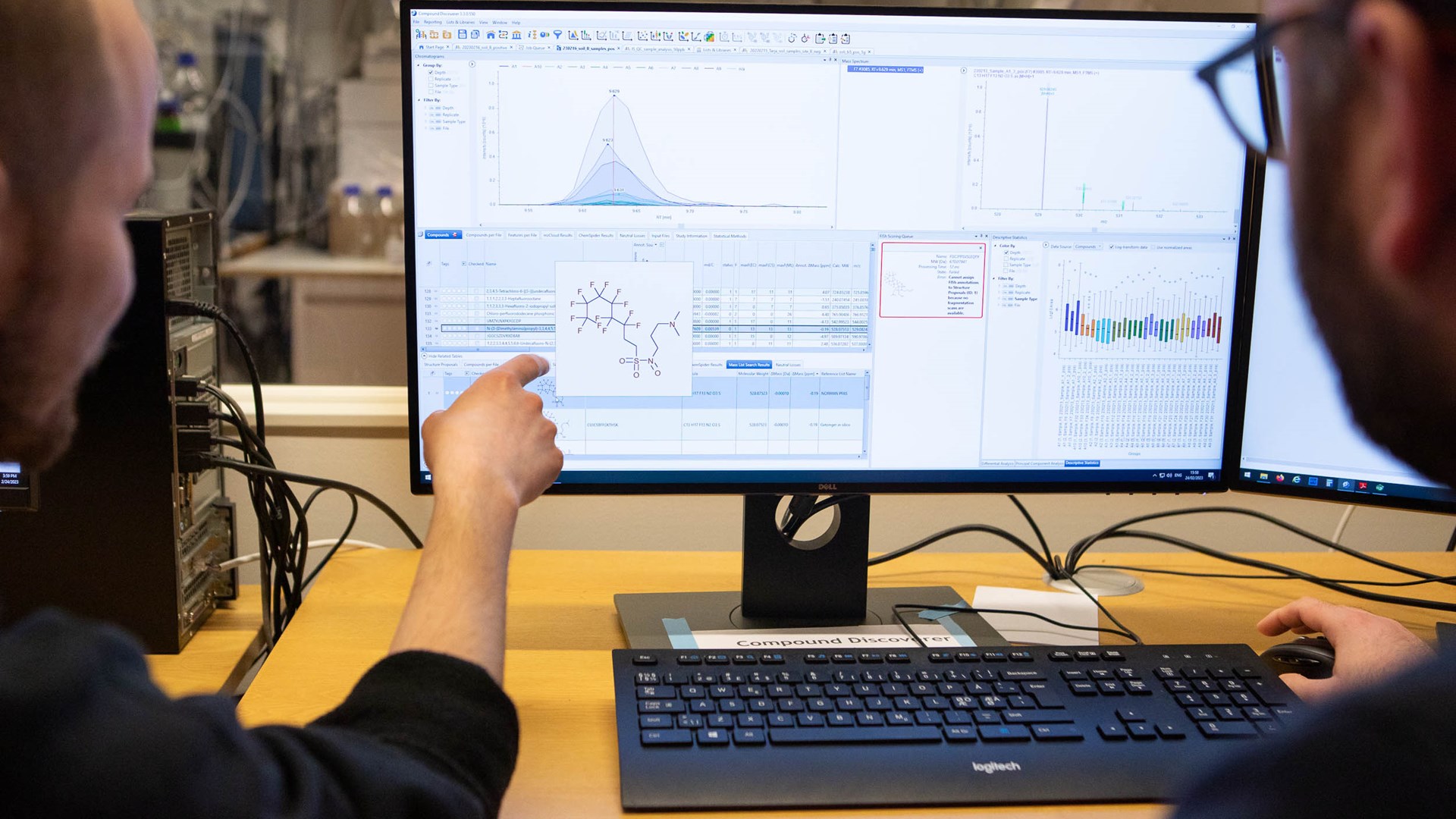
In the control room, the results of the mass spectrometry analysis can be followed and a first indication of which substances are present in the water samples can be obtained. It requires both chemical expertise and sophisticated instruments to achieve robust results.
Photo: Jenny Svennås-Gillner
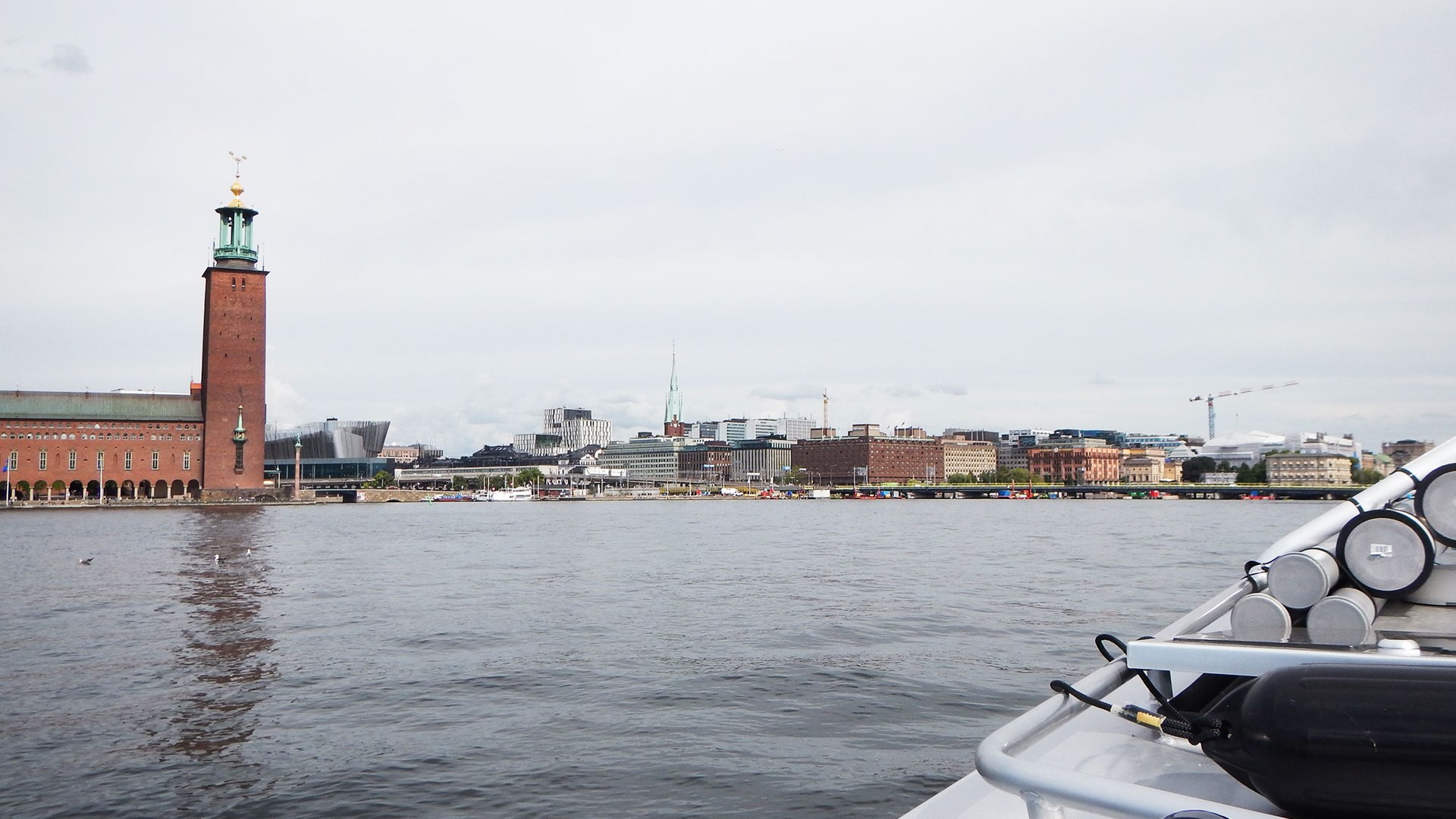
Sampling in Lake Mälaren, which supplies just over two million people with drinking water. The lake is thus Sweden's most important source of drinking water and is therefore closely monitored by SLU.
Foto: Joel Segersten
While this takes place, the toxicologists are analysing the samples. This gives us information about which packets demonstrate responses in the toxicologists’ tests, and we chemists can focus on identifying the hazardous substances in those packets. Perhaps they will discover hormone-disrupting effects? Oxidative stress? General toxicity? Genetic effects?
To truly understand what triggers toxicity in water, we have to dig deeply. There are tens of thousands of substances environmental water samples, but simply finding chemical substances in a sample does not automatically spell danger. If necessary, the fractionation and chemical and toxicological analysis are repeated until we have one or a handful of candidates. The ultimate goal is to pinpoint the substance or substances that are causing problems.
This method allows us to assess to whether the water contains something harmful. Which is a relief; we don’t want a repeat of the PFAS nightmare. Discovering harmful substances in raw water intended as drinking water, in order to be able to eliminate them, is a core issue for drinking water producers. And there are always new chemical substances popping, and we need to learn more about them. To make these tests available, toxicologists have started a company that offers toxicological testing of water for the water sector.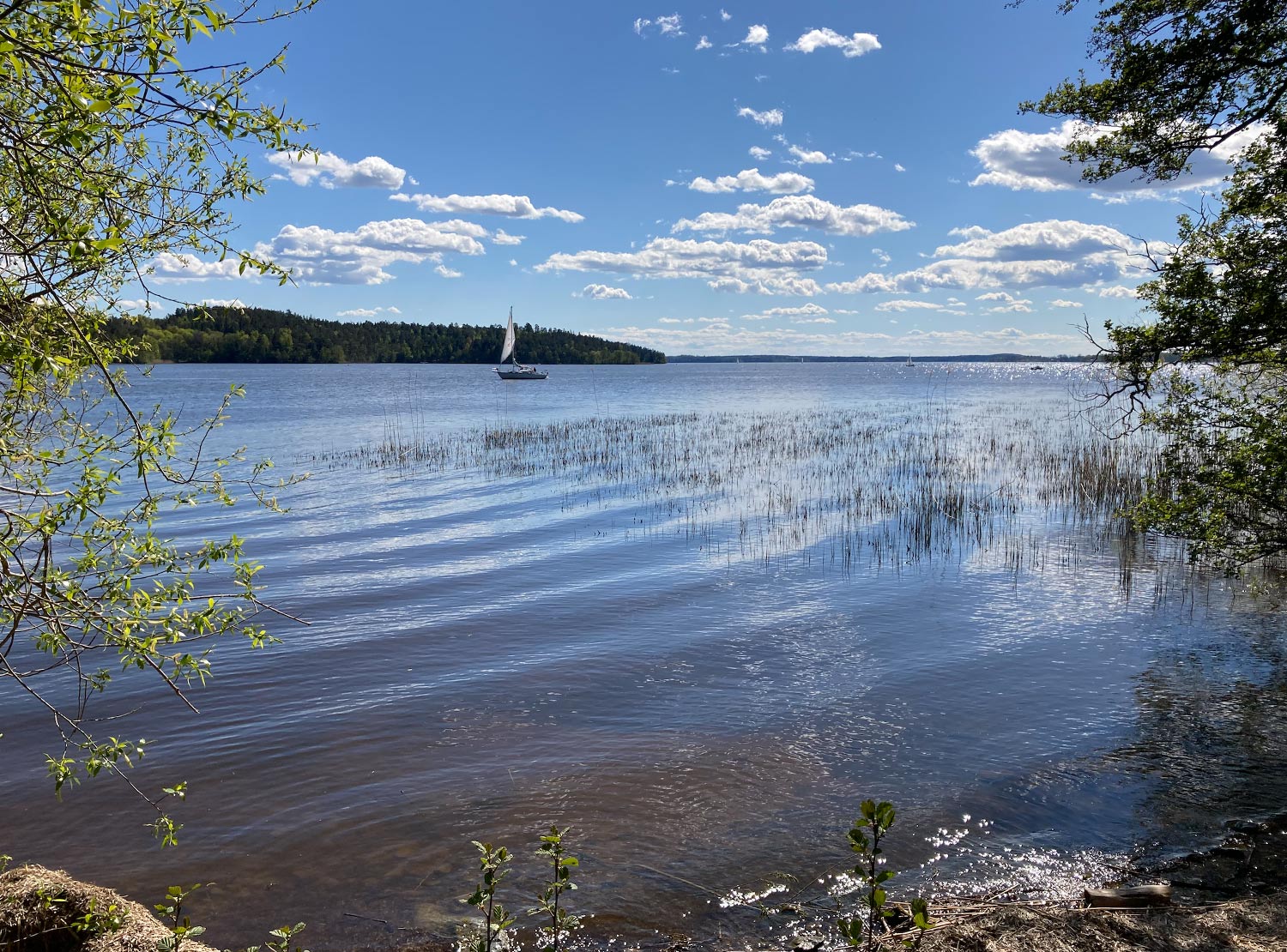 Lake Mälaren is not only used as a source of drinking water, but also for recreation, transport, and fishing. It is also important for indirect services such as climate regulation and biodiversity. Foto: Faruk Djodjic
Lake Mälaren is not only used as a source of drinking water, but also for recreation, transport, and fishing. It is also important for indirect services such as climate regulation and biodiversity. Foto: Faruk Djodjic
![]()
Developing this method further is an exciting and enriching journey to be a part of. Access to clean and healthy drinking water is a fundamental need, and there are many interesting problems yet unsolved. I think good partnerships are a key to this.
![]()
Story:
Ulrika Jansson Klintberg, e-mail, +46 18-67 30 13
Department of Aquatic Sciences and Assessment
Press/research contact:
Karin Wiberg, Professor of Environmental Organic Chemistry
e-mail, +46 18-67 31 15
Department of Aquatic Sciences and Assessment
Production:
SLU Division of Communication, e-mail
The content is free to share in its original form if the source/url is cited.
![]()
An eye for science. We see the world through our own eyes. Sometimes we need a microscope to see the bigger picture, other times patterns are clearer at a distance. Beauty can catch your eye from the bottom of a petri dish, during a walk in the woods, or in a new data series. SLU brings together people who have different perspectives, but they all have one and the same goal: to create the best conditions for a sustainable, thriving and better world.
